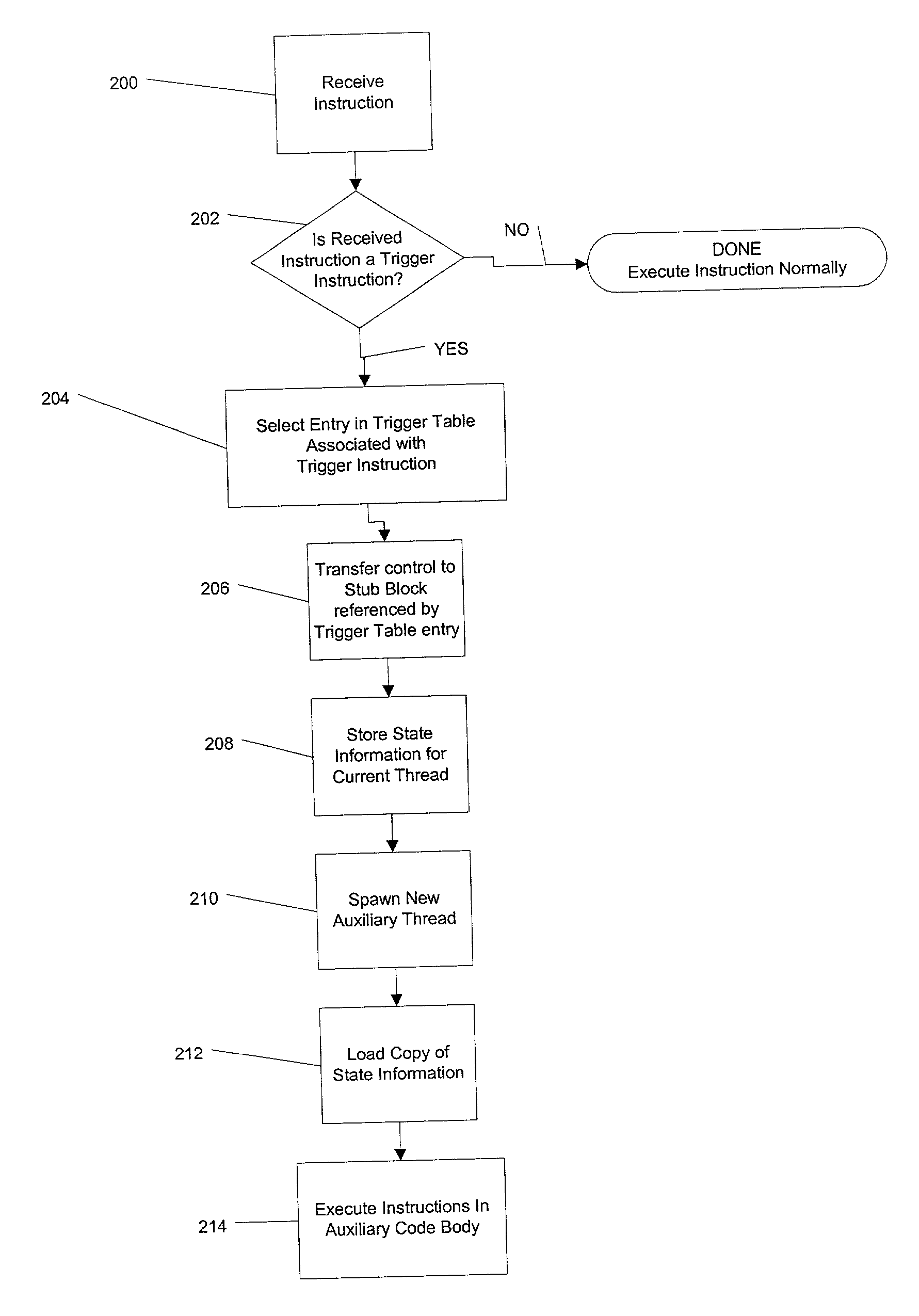Method and apparatus for compiler-generated triggering of auxiliary codes
a technology of auxiliary codes and compilers, applied in multi-programming arrangements, instruments, computing, etc., can solve problems such as system performance degradation
- Summary
- Abstract
- Description
- Claims
- Application Information
AI Technical Summary
Benefits of technology
Problems solved by technology
Method used
Image
Examples
second example embodiment
[0069] Second Example Embodiment
[0070] According to a second example embodiment of the present invention, a procedure may be provided to place auxiliary code "optimally" with respect to the original binary code of the function body. The auxiliary code may be located in memory so that concurrent fetch operations in the original function body binary and the auxiliary code will not cause cache bank conflicts or cache line conflict misses.
[0071] In the second example embodiment, the compiler may include techniques similar to branch alignment optimization. See, e.g., Cliff Young, Nicolas Gloy, and Michael D. Smith, "A Comparative Analysis of Schemes for Correlated Branch Prediction", Proc. 22nd Annual Intl. Symp. on Computer Architecture, June 1995. The example compiler may also include a continuous recompilation module. This continuous recomputation module may receive alignment profile information, e.g., from a real time monitoring mechanism. The example compiler may then re-map the aux...
third example embodiment
[0072] Third Example Embodiment
[0073] According to a third example embodiment of the present invention, profile results that identify a set of delinquent operations for a given binary can be fed back to a continuous compiler or dynamic optimizer so that the compiler can re-analyze the data flow of the program instructions leading up to the delinquent load, discover auxiliary codes, and optimize trigger placement.
fourth example embodiment
[0074] Fourth Example Embodiment
[0075] According to a fourth example embodiment of the present invention, profile results that identify and produce auxiliary code instruction sequences for a set of delinquent operations in an original binary code may be fed back to a continuous compiler or dynamic optimizer. The compiler, linker or loader may place or package these instruction sequences in a location associated with the original binary.
[0076] In a system with tight-coupling, the auxiliary code instructions may be packaged in the same binary as the original code.
[0077] In a system with loose coupling, the auxiliary code instruction sequences may be packaged in a DLL (dynamic linked library) or similar mechanism. It will be appreciated that packaging the auxiliary code instructions in a DLL-like mechanism may allow changes to be made outside the original binary, while retaining the DLL label or thunks in the original binary.
PUM
 Login to View More
Login to View More Abstract
Description
Claims
Application Information
 Login to View More
Login to View More - R&D
- Intellectual Property
- Life Sciences
- Materials
- Tech Scout
- Unparalleled Data Quality
- Higher Quality Content
- 60% Fewer Hallucinations
Browse by: Latest US Patents, China's latest patents, Technical Efficacy Thesaurus, Application Domain, Technology Topic, Popular Technical Reports.
© 2025 PatSnap. All rights reserved.Legal|Privacy policy|Modern Slavery Act Transparency Statement|Sitemap|About US| Contact US: help@patsnap.com



